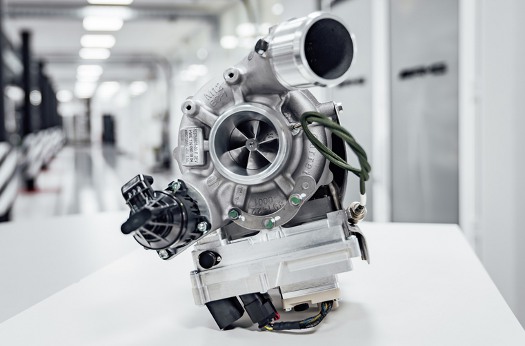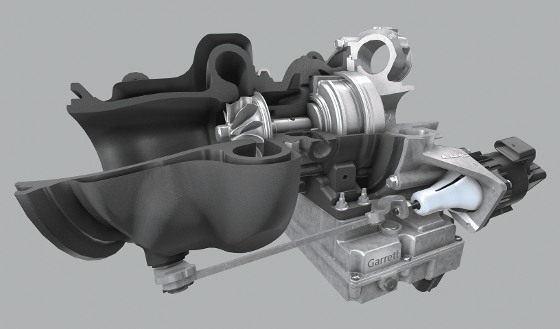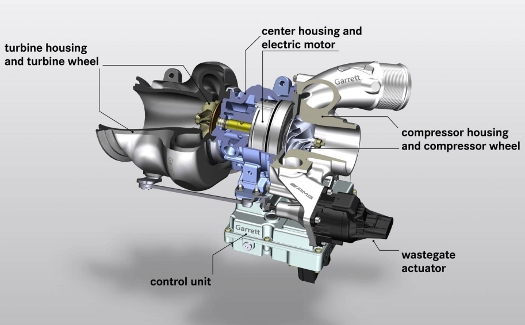 |
| August 18, 2020 | Volume 16 Issue 31 |
Designfax weekly eMagazine
Archives
Partners
Manufacturing Center
Product Spotlight
Modern Applications News
Metalworking Ideas For
Today's Job Shops
Tooling and Production
Strategies for large
metalworking plants
Mercedes adds electric motor-generator to turbocharger

A high-end, combustion-engine passenger-car model from Mercedes-AMG will soon sport a turbocharger that boasts no turbo lag. Drawn straight from Formula 1 technology, the innovative "air on demand" design adds a small electric motor directly on the turbocharger shaft between the turbine wheel on the exhaust side and the compressor wheel on the fresh-air side.
The 1.6-in., electronically controlled motor drives the compressor wheel before accepting the exhaust gas flow. Mercedes says this E-Turbo design "significantly improves response from idle speed, as well as across the entire engine speed range ... the combustion engine responds even more immediately to accelerator pedal input, and the entire driving character is significantly more dynamic and agile."

There's another big benefit. According to a Motor Authority article, "The motor can also act as a generator, turning heat energy normally wasted in the exhaust into electricity. This electricity can then be stored for later use."
In addition, electrification of the turbocharger enables higher torque at low engine speeds, which also enhances agility and optimizes acceleration capability from a standstill. Even when the driver takes their foot off the accelerator or applies the brakes, the electric turbocharger is able to maintain boost pressure at all times, so a continuous and direct response is assured.
According to Motor Authority, at low revs (specifically 1,500 rpm) the E-Turbo "is able to deliver a targeted torque rating in 1.0 second versus the 4.5 seconds that a conventional turbocharged engine requires. ... That translates to 25 percent quicker acceleration from 37 mph to 62 mph."

Mercedes says the turbocharger can achieve speeds up to 170,000 rpm, which enables a very high rate of air flow. It can be operated via a 48-V on-board electrical system. The turbocharger, electric motor, and power electronics are connected to the combustion engine's cooling circuit to create an optimized temperature environment at all times. E-Turbo can work on both gasoline and diesel vehicles.
A next-gen Mercedes-AMG vehicle (possibly the next C63, which also could be a hybrid) will get the new electric exhaust gas turbocharger, which was developed in partnership with Swiss turbocharger specialist Garrett Motion. Garrett says that "electrifying a turbocharger removes the constraint of needing a small turbine with excellent efficiency to drive the compressor at low flow rates. Instead, it allows us to right-size the turbine for Lambda 1 rated power. Any penalty in inertia can be more than compensated for by an E-Motor, and the addition of a wide-range compressor can result in both improving low-end and stretching high-end performance simultaneously." The technology can also help contribute to engine downsizing design.
Garrett turbocharging technology has been used since the 1950s by nearly every major global automaker and also Caterpillar and Deere tractors and off-road equipment. The company also has 10 active global programs in varying vehicle segments capable of electrical regeneration to create energy supporting hybrid vehicle operation.
The idea for the motorized turbocharger came from F1 racing. Here, Mercedes-AMG engineers talk about the concept as racing technology back in 2016.
Sources: Mercedes-AMG, Motor Authority, Garrett Motion
Published August 2020
Rate this article
View our terms of use and privacy policy
